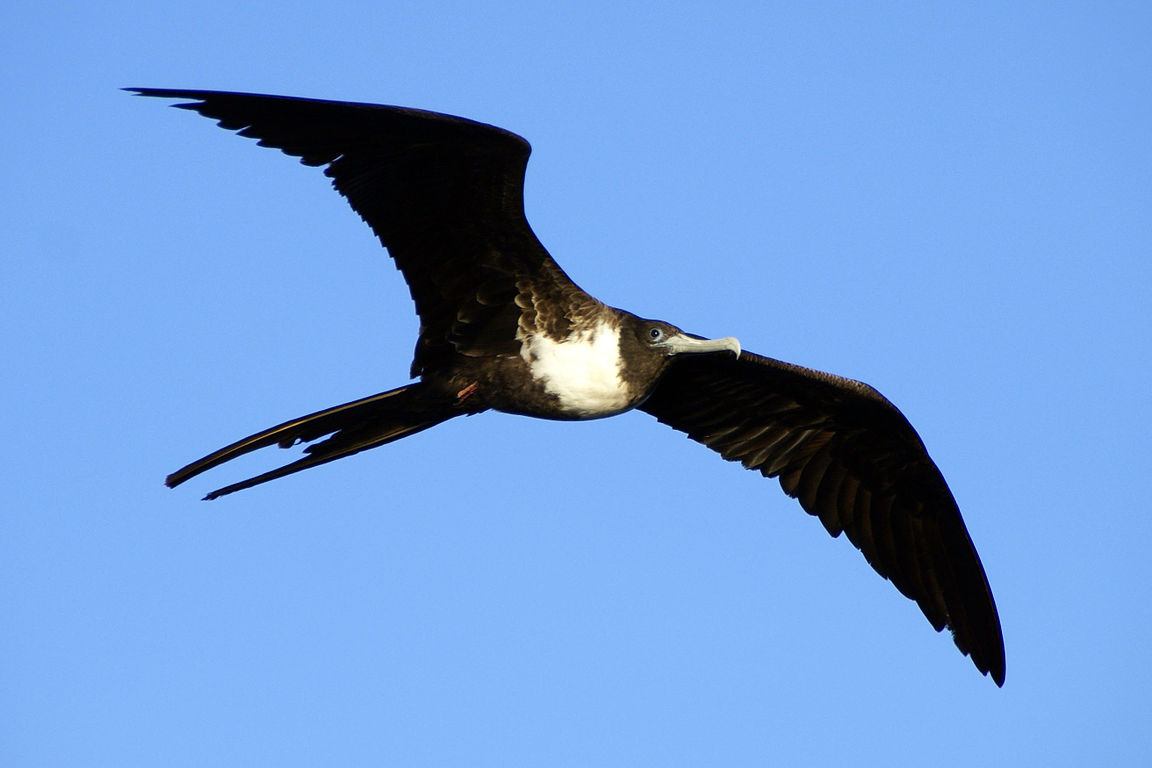Frigate birds are truly champion fliers. New research has shown that the large, ocean-going birds can fly for weeks without stopping, at altitudes up to 13,000 feet. Unlike most sea birds, frigate birds cannot swim or rest in the water. They survive off leaping baitfish and stealing food from other birds. Given their inability to land, frigates have no choice but to keep flying, but lots of other birds fly incredibly long distances. How do they do it?
For starters, conserving energy is a must. To that end, many birds, including frigates, have perfected to art of soaring on air currents, particularly warm updrafts. The energy savings are considerable. In a 1978 study of herring gulls, researchers calculated that while soaring on an updraft a gull had a heartbeat of around 275 beats per minute; during hard flapping, the heartbeat was closer to 500 bpm. Soaring flight was only slightly harder for a gull than sitting quietly.
Long flights sometimes require birds to fly to extreme altitudes. The frigate bird uses its huge wings to simply ride high altitude currents and avoid the higher energetic requirements of flying in thinner air. Other birds must rely on special physiological adaptations. Species that are routinely exposed to high altitudes have developed specific adaptations. Many have higher density of capillaries in their wing muscles, allowing adequate blood supply at altitude. In many birds, the oxygen carrying capacity of hemoglobin increases in response to decreasing pressure. Birds also do not seem to suffer mental impacts from oxygen deprivation.
Probably the weirdest adaptation of birds to long distance flight is seen in long-distance migrants. These birds can actually change the shape of their organs as they fly. Many migrants fly for longer distances than is typical, and eat less than they are accustomed to. After burning fat reserves, many species begin to consume lean muscles, and eventually organs. A 2000 study of migrating great knots found that organ mass decreased anywhere from 5-30% over the course of a journey from Australia to China. The birds’ metabolism decreased by almost 50% in order to keep organ consumption to a minimum. Only the brain and lungs were unaffected. Despite such massive changes, the birds suffer no apparent long-term health impacts.
These adaptations are pretty extraordinary. Not even the fittest ultra-marathoner can run for days without eating or drinking. Hardly any known organisms could sustain that level of organ damage without dying. No wonder we love birds so much.







